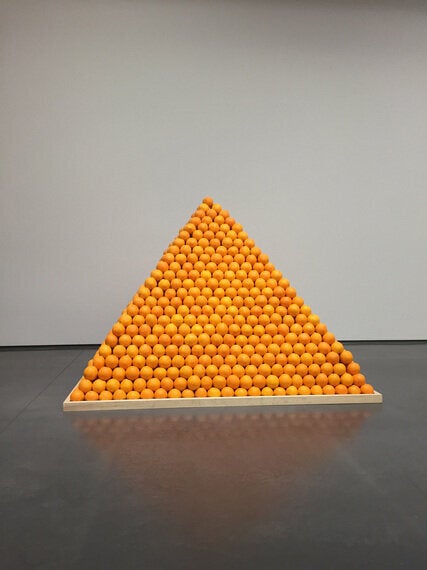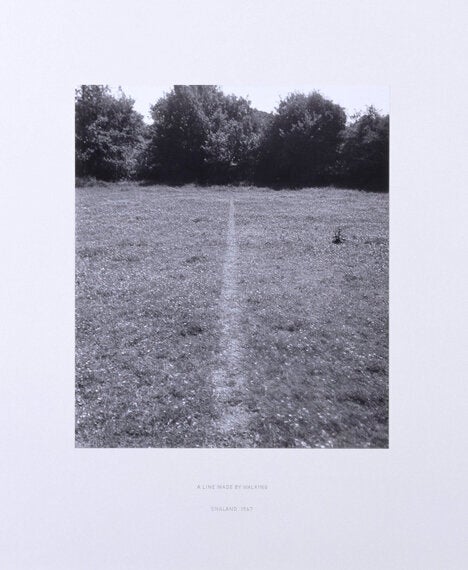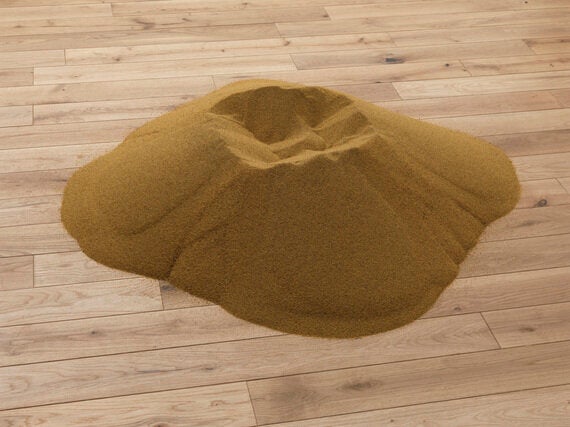
With its focus on British artists in the 1960s and 1970s, Conceptual Art in Britain 1964-1979 at Tate Britain sets out to demonstrate how radical conceptual art was, how it challenged the very notion of what art is, and caused us to question not only art's purpose, but also how it is made. So this should have been a dynamic and radical exhibition, one that divides and provokes. Instead, Conceptual Art is surprisingly flat and lacking in energy.
The show certainly starts off well. Roelof Louw's seminal work, Pyramid of Oranges, greets the visitor. It's vivid and it's exciting. And it's a great piece of work that sums up what the exhibition is supposed to highlight, that conceptual art was a democratic as well as a radical notion. Art and art materials did not have to be exclusive and expensive, but available for all. This is art that makes the extraordinary out of the ordinary. And the pyramid itself fascinates - a fusion of spheres and straight lines.
[Feel free to take the oranges. That is allowed. Only you do have to wait till you leave the exhibition before you can start eating the orange!)
And the oranges are surrounded by all the type of art you know the Daily Mail will hate: Barry Flanagan's pile of sand, Richard Long's photos of the lines he created in a field by walking back and forth over certain patches of grass, Arts & Language's mirror (or, rather, Untitled Painting), a giant black square... Basically it's the kind of art that will have some saying, 'but it really is just a pile of sand. I don't get it'.

The opening room gave me high hopes - this is art that leads the visitor to question art, and question how they respond to it - but sadly my enthusiasm just deflated after that as, after this high, well, the exhibition's energy just disappears and this becomes a very flat and dreary show.
All colour seems to drain away with the works, primarily, being in black and white. And the pieces themselves do not stimulate: filing cabinet drawers filled with tattered record cards, shelves of cassettes in clear boxes, yet more black squares, yet more mirrors, dozens of sheets of paper with 'hot' and 'cold' written on them.... I hate myself for beginning to sound just like the Daily Mail here but it's not that I don't think this is art (I do) and I don't necessarily think this is because the passing of time has blunted the sharp edges of conceptual art - this is still a genre that can divide and provoke. It's just that these do not seem to be the finest collation of works to showcase British conceptual art at its best.
And there is far too much in display cabinets and vitrines. It's all very passive and unimposing. A conceptual art exhibition should be challenging, it should take up space. This is, bizarrely, staid and conservative.
That's not to say there aren't some interesting messages amongst these works. Stephen Willat's analysis of the mental thought process and the rationalisations made by an elderly woman, Mrs Moran, as she lived alone in her bleak tower block are haunting in their indictment of civil society, and Victor Burgin's juxtaposition of a stock advertising image of a romantic couple with slogans about possession makes for an interesting commentary on how we see relationships. But, sadly, these are rather isolated examples.

The admission fee for this show is £12. That's quite a chunk, especially for such a small show - the exhibition covers only about half a dozen rooms - and many of the pieces come straight from the Tate's own collection. Margaret Harrison's Homeworkers, for example, has only just come down from the walls in the Tate Modern, where you could have seen it for free. I feel you'd have to take a good bagful of oranges to make this value for money.
Tate Britain has had a hard time of it recently with their exhibitions - the Frank Auerbach retrospective a notable exception - so it doesn't feel great giving the team there another knock. But, nevertheless, Conceptual Art is an indication that the mix is still not quite right.
Tate Britain, London to August 29, 2016
Admission £12 (concessions available)
Image Credits:
1.Roelof Louw Soul City (Pyramid of Oranges) 1967 Tate. Presented by Tate Patrons 2013. Image courtesy Aspen Art Museum, 2015 © Roelof Louw
2.Richard Long A Line Made by Walking 1967 Tate. Purchased 1976 © Richard Long / DACS, London
3.Barry Flanagan ringn '66 1966 Tate. Purchased 2010 © The Estate of Barry Flanagan, courtesy Plubronze Ltd.